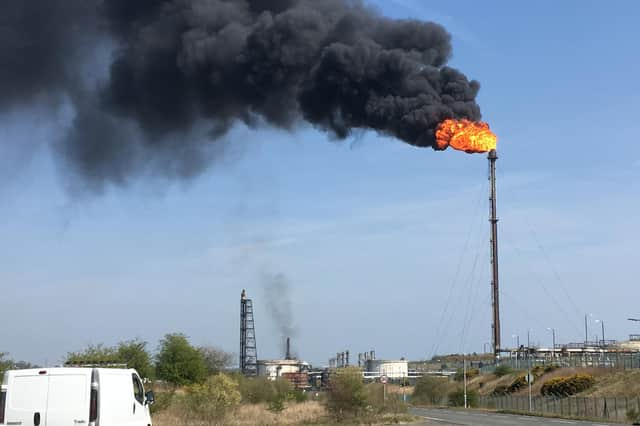Mossmorran flaring emissions 'equivalent of 9000 flying return Glasgow-New York'


It has published figures from the Scottish Environment Protection Agency (SEPA) showing that 13,800 tonnes of CO2 could have been emitted from the plant during flaring in October.
Advertisement
Hide AdAdvertisement
Hide AdThe figures came as residents staged a third weekend protest at the plant to highlight their concerns on the impact of flaring on local communities.
The plant flared for three days from October 4-6 - the fourth time it has happened since 2020.
Mark Ruskell MSP, the Greens’ environment spokesman renewed his calls for a transition plan for the plant, said, “Flaring is distressing and highly disruptive for local residents every time this fossil fuel relic suffers a breakdown, but these figures also now show the catastrophic long-term impacts this is having on our environment.
“Scotland has a legally binding target to achieve net-zero emissions by 2045, so it’s baffling to find out this much carbon is regularly being burned off into out atmosphere with very little consequence for the operators.”
Advertisement
Hide AdAdvertisement
Hide AdKirkcaldy YM: A look back at one of the town's iconic music venuesFife support centre for pupils closed as COVID links force staff to...
Mr Ruskell claimed delayed work to reduce the impact of flaring wouldn’t have a significant impact on reducing carbon emissions, adding: “The operations of this plant fundamentally rely on the burning of huge quantities of fossil fuels, and we urgently need a plan to decarbonise it, or transition away from fossil fuel industries altogether in Scotland.”
A spokesman for Mossmorran said Fife Ethylene Plant was committed to minimising CO2 emissions and maximising energy efficiency - and it reports and pays for its CO2 emissions under the EU Emissions Trading Scheme.
He added: “’We have a number of innovations in heat integration, such as using waste heat from our gas turbine to reduce fuel consumption in our furnaces to maximise energy efficiency while cutting energy use and associated CO2 emissions.”
Advertisement
Hide AdAdvertisement
Hide AdHe said ExxonMobil is pursuing technologies to enhance existing operations and develop alternative energies with a lower carbon intensity including: researching breakthroughs that make carbon capture and storage (CCS) technology more economic for power generation and industrial applications, developing process intensification technologies to reduce the energy needs of plants such as Mossmorran.